Urbanism is the multifaceted field that revolves around the study, planning, and development of urban areas. This discipline delves into the intricacies of designing, organizing, and shaping urban environments to accommodate diverse populations, foster economic growth, ensure sustainability, and improve overall quality of life. From architectural designs to transportation systems, social interactions to environmental considerations, urbanism plays a fundamental role in creating functional, aesthetically pleasing, and vibrant spaces where communities can thrive.
We have discussed in Pertanto the advantages and implications of biophilia and the use of vegetation in architecture. In urbanism, it refers to the integration of plant life, green spaces, and sustainable practices in urban environments. It is an approach to urban planning and design that aims to create more livable and environmentally friendly cities by incorporating vegetation, natural elements, and sustainable strategies.
The goal is to improve the quality of life for urban residents by addressing issues such as air quality, climate change, biodiversity loss, and general well-being. This approach involves the creation of green spaces, promotion of biodiversity, improvement of air quality, and resilience to climate change, all while fostering community participation and seeking greater harmony between nature and the built environment in cities.
Singapore serves as a compelling example of how plant-based urbanism can be successfully integrated into a densely populated urban landscape. Despite its limited land resources, Singapore has ingeniously embraced this approach to enhance its urban environment.
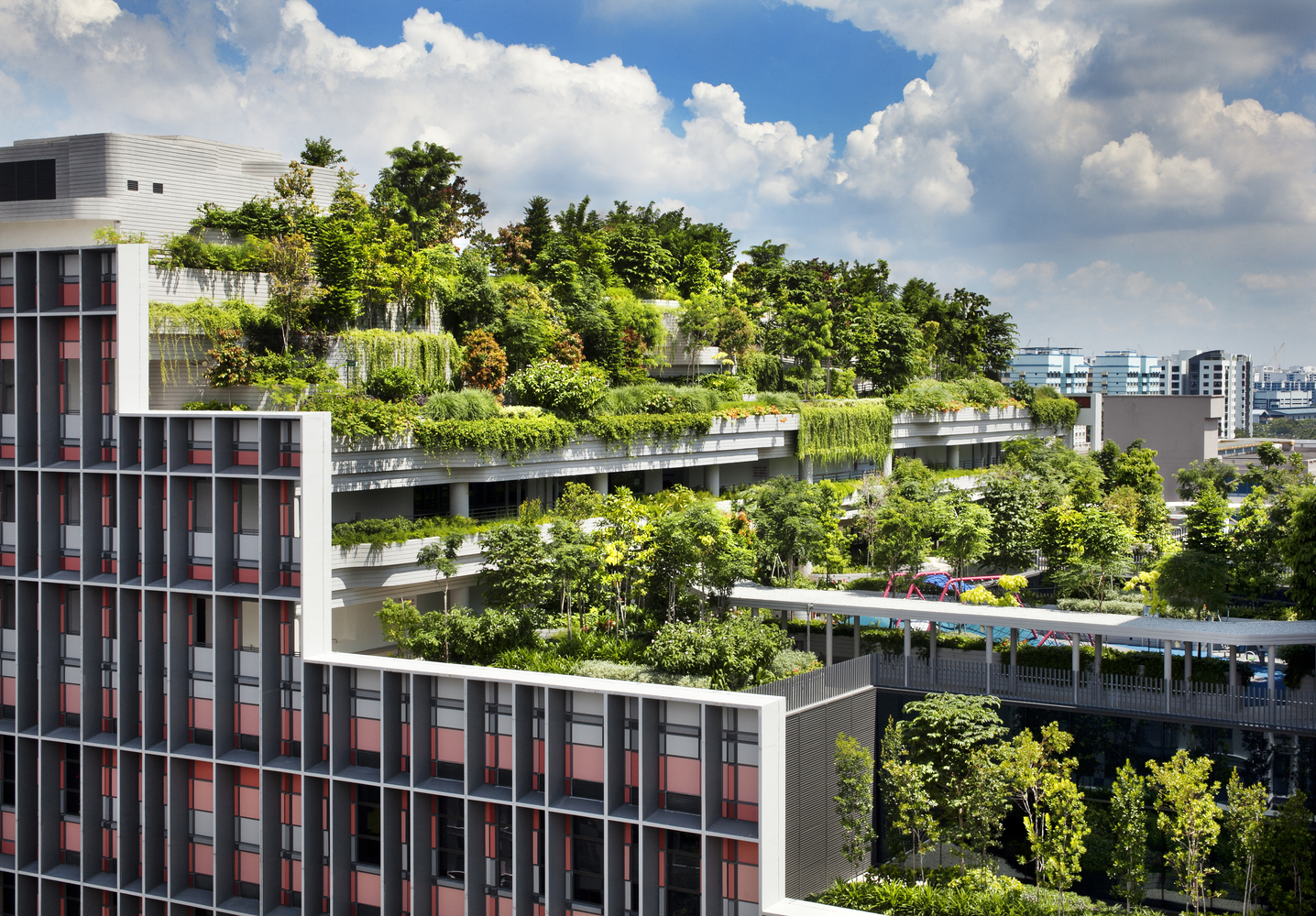
Kampung Admiralty. Imagen cortesía de WOHA.
Singapore has implemented various strategies with the goal of effectively incorporating vegetation into its urban environment. One of the most prominent ways is through vertical gardens and facades covered with vegetation that adorn many buildings in the city. These elements not only add distinctive aesthetic appeal but also contribute to improving air quality, providing thermal insulation, and increasing biological diversity amidst urbanization.
The creation of public parks and green spaces is another fundamental strategy in Singapore’s approach. Iconic places like Gardens by the Bay and the Singapore Botanic Gardens offer residents and visitors areas for relaxation and recreation, allowing them to connect with nature amidst the urban setting. Additionally, the city promotes urban agriculture by establishing rooftop gardens and community gardens to promote local food production and raise awareness about sustainable agricultural practices.
Singapore has also stood out for its commitment to restoring natural habitats amidst its urban development. Despite urbanization, the city has preserved and restored valuable ecosystems such as mangroves and coastal areas, contributing to biodiversity conservation and providing refuge for local wildlife.
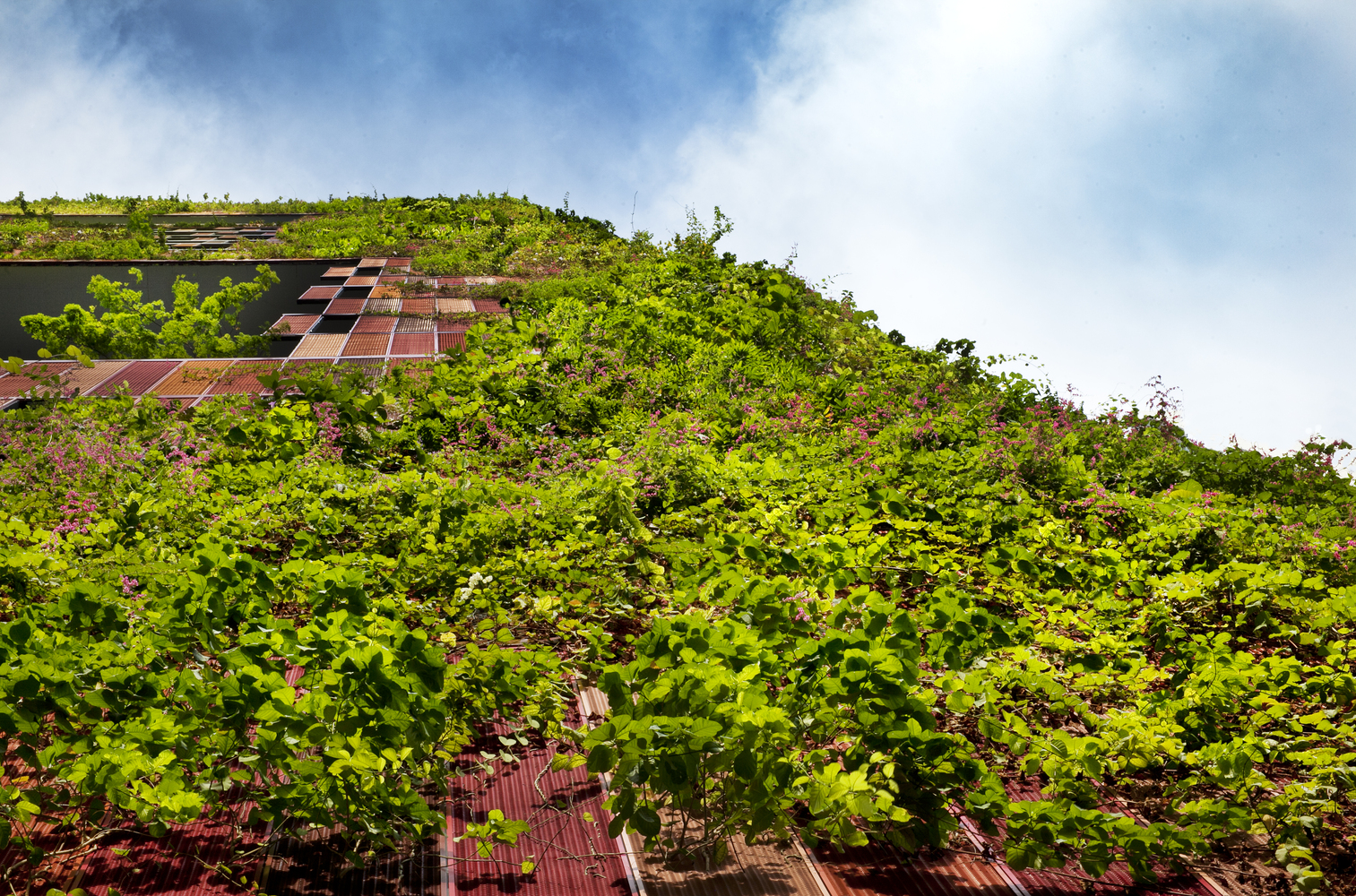
Oasis Hotel. Imagen courtesy of WOHA.
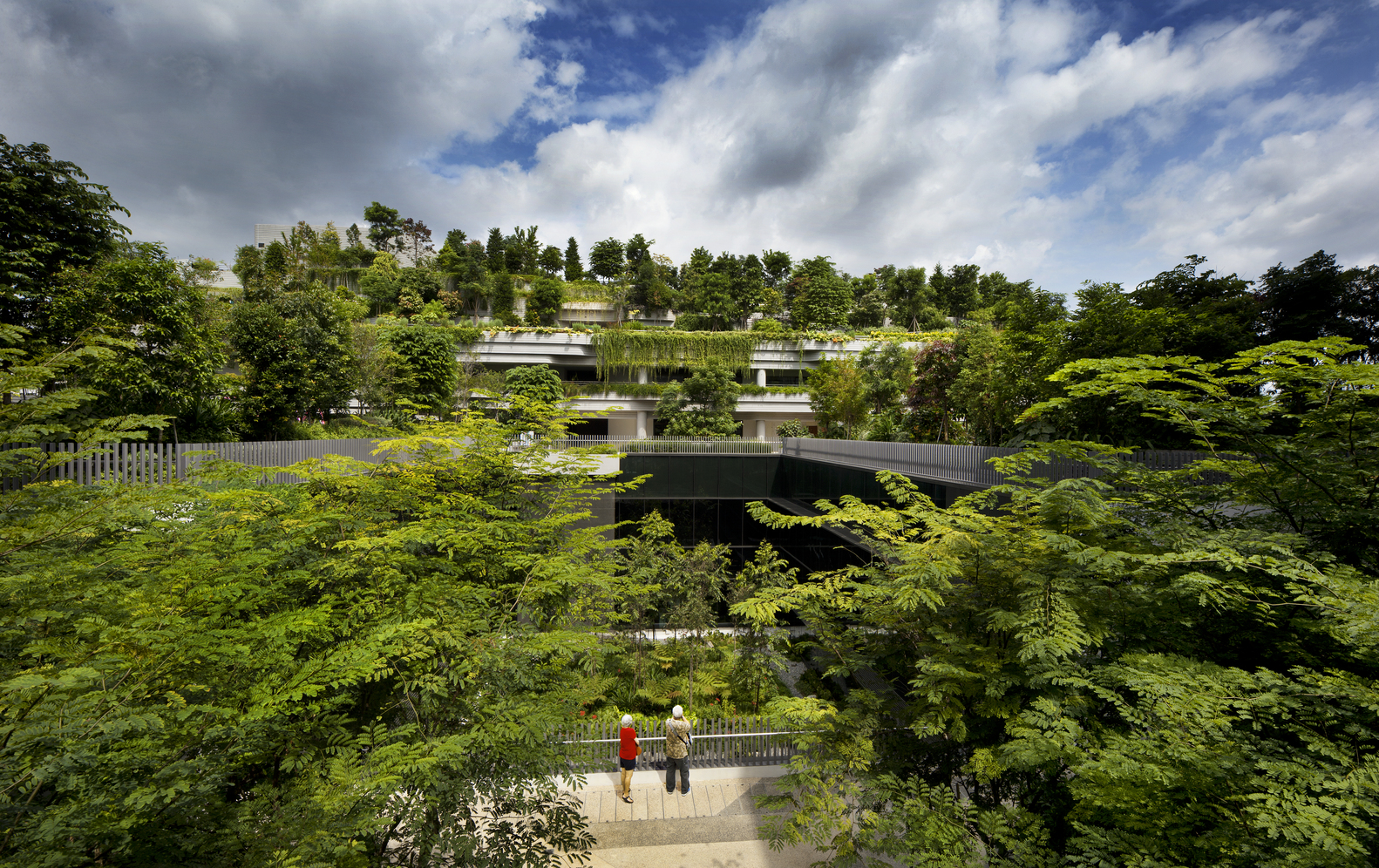
Kampung Admiralty. Courtesy of WOHA.
The implementation of green infrastructure, such as green roofs and walls, has been essential in improving the energy efficiency of buildings and reducing the impact of urban heat. These infrastructures also play a crucial role in enhancing air quality by filtering pollutants and promoting a healthier atmosphere in the city.
The city has also established green connections through natural corridors and elevated walkways that link various green spaces throughout the urban area. This network of vegetation and green areas promotes the flow of nature within the city and creates a sense of continuity that contrasts with the built environment.
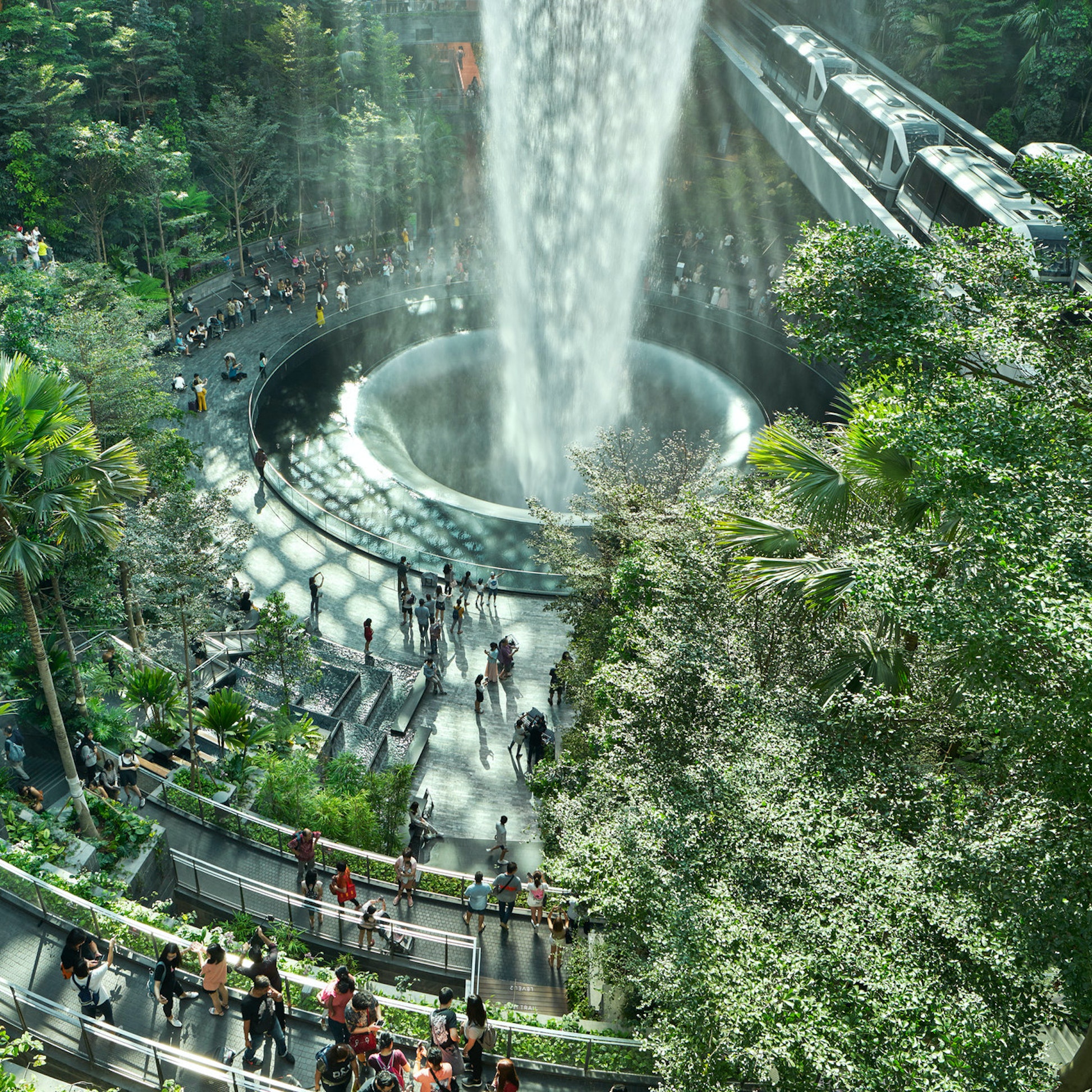
Jewel Changi Airport. Courtesy of Safdie Arquitectos.
Furthermore, Singapore has promoted education and awareness within the community regarding the importance of vegetation in the urban environment and the need for sustainable practices. The city has implemented educational programs and activities that involve citizens in nature conservation within the urban context.
In terms of sustainable development policies, Singapore has established regulations that encourage the incorporation of green spaces in new urban projects and promote sustainability in urban planning. Additionally, the transformation of industrial areas into waterfront spaces, such as Marina Barrage and East Coast Park, illustrates the city’s commitment to revitalizing urban spaces through vegetation and creating recreational places for residents.
These combined strategies have allowed Singapore to strike a balance between urban life and nature, enriching the quality of life for its citizens and setting a prominent example of vegetation-based urbanism and sustainability.
Singapore has successfully demonstrated how vegetation-based urbanism can transform a dense urban environment into a sustainable and habitable oasis. Through its commitment to integrating green spaces and vegetation into its urban development, the city has managed to address environmental challenges and improve the quality of life for its residents.
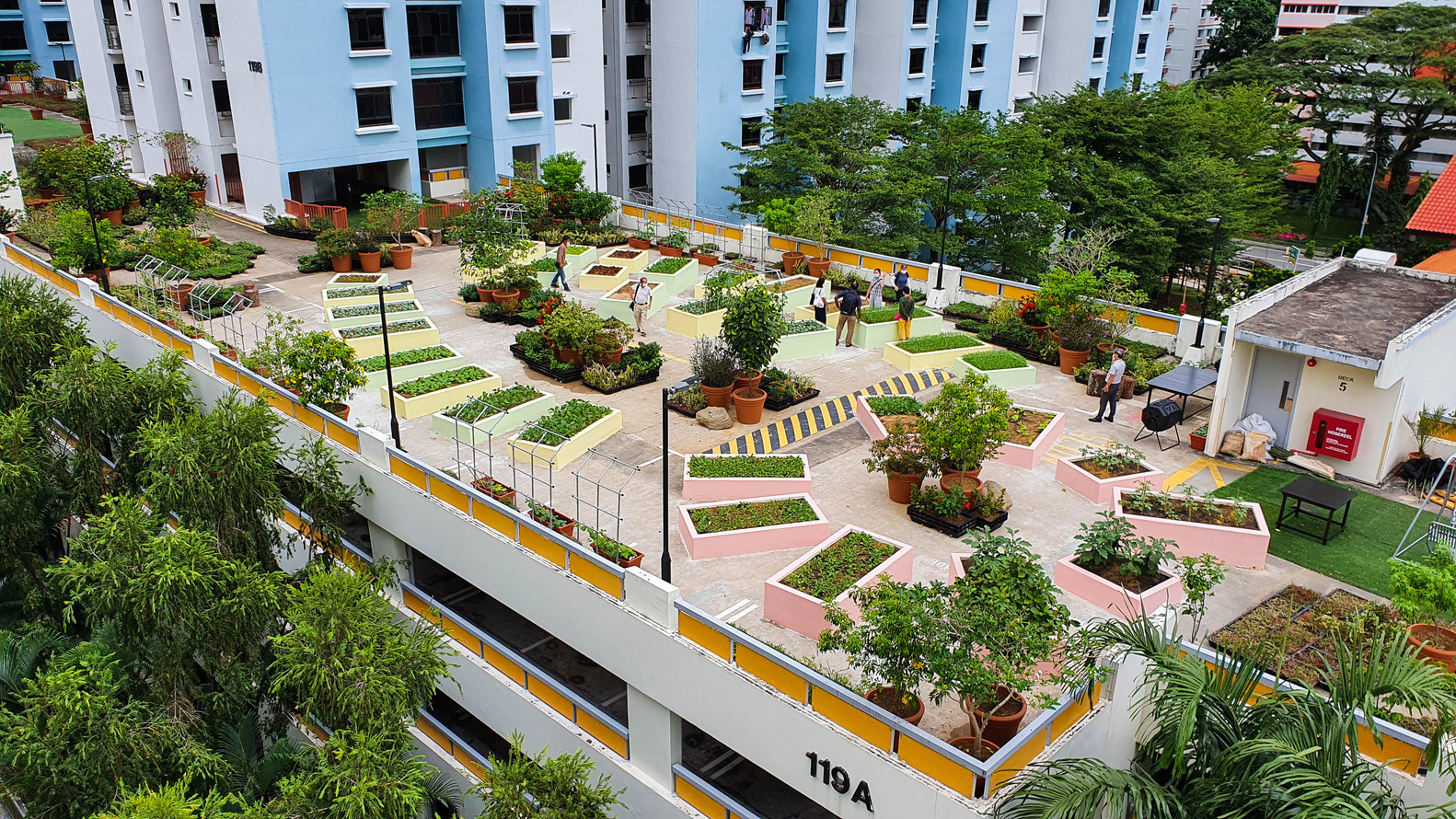
The Giving Garden. Courtesy of National Park Boards.
This approach to green urbanism also reflects a forward-looking mindset. By effectively integrating vegetation into its urban development, Singapore has created an inspiring model for other cities seeking to balance urban expansion with environmental preservation. As the world faces increasingly pressing environmental challenges, Singapore’s example highlights the feasibility and benefits of an approach that prioritizes harmonious coexistence between nature and the built environment.


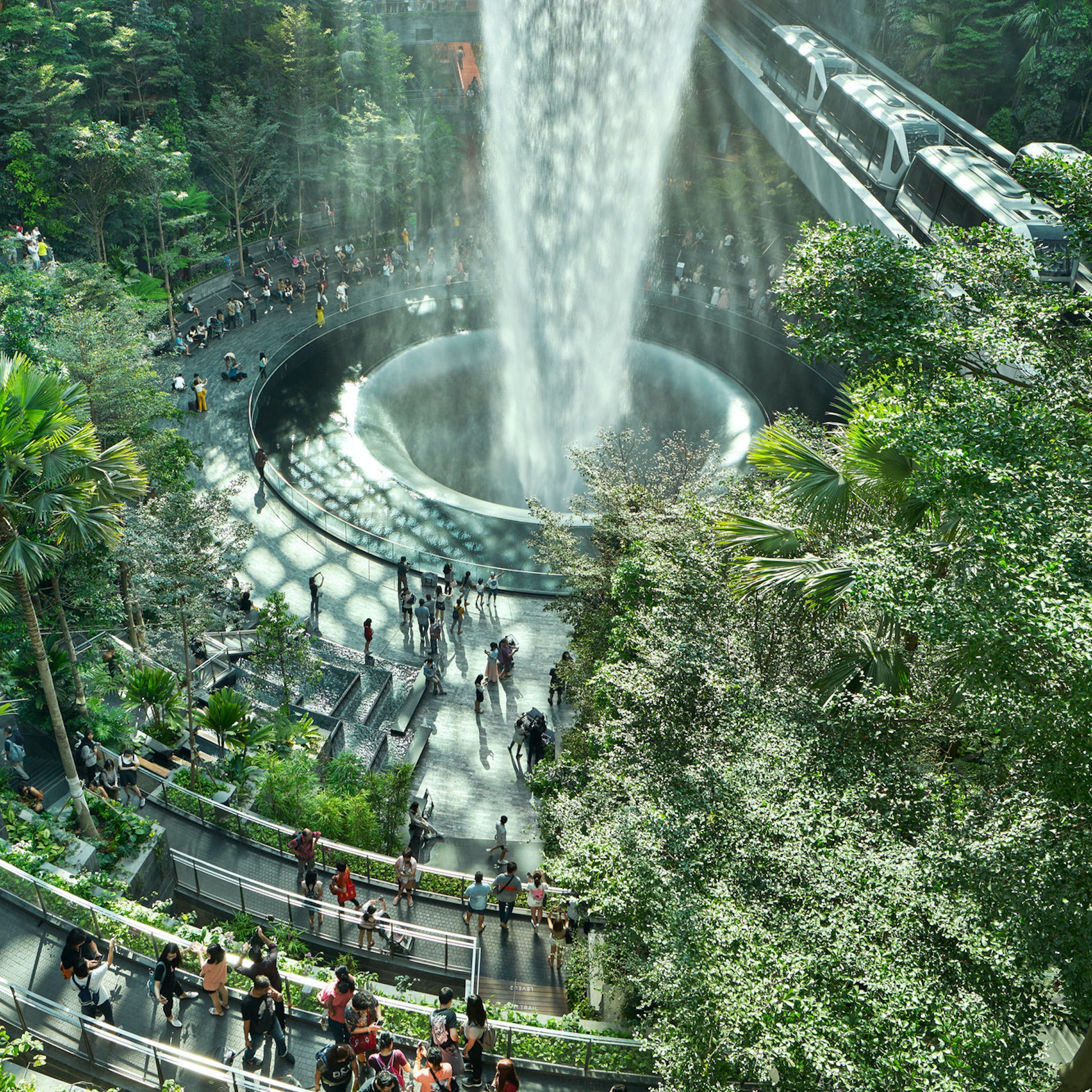




Leave A Comment